20/10/2016
We finally arrive at the stage of this project that has generated the most anxiety for me. It will be my first attempt at using Windsor technology in any piece of furniture. As you know from the previous posts in this series I have completed the bulk of the so called trapezoid leg, so now we need to grapple with the so called Windsor leg. The rest of the table was inspired by (and leans heavily on) the work of George Nakashima, but this leg is entirely my creation. Having said that I am quite sure there would be similar designs out there, but it was not something I can remember seeing on the net during my research phase.
The idea with this design in general is that it suites the feral nature of the wood I have available. As most of you probably know, Nakashima was a master in the art of allowing the wood to speak for itself. The idea behind this particular leg is to create an elegant counterpoint to the otherwise rugged robustness of the design. It is meant to establish a sense of the top deceiving gravity. In other words, I wanted it to appear as if the top is floating in mid air. There will be a few more details added to the inside of the trapezoid leg to further enhance the mentioned effect, but for that you will have wait.
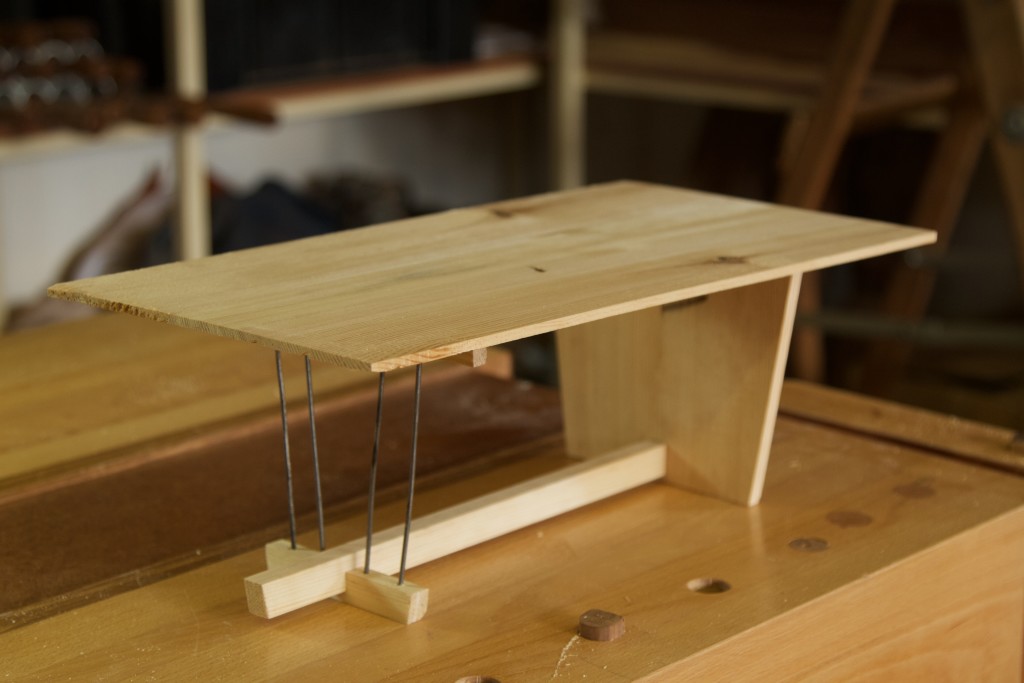
As you might remember the Kershout beams that will form the top and the bottom of the Windsor leg were laminated previously. My first step thus, was to square up a face and an edge by hand planing. I included the monstrous beam that runs between the two legs (at floor level) in this process as it has exactly the same dimensions i.e. 66 mm x 88 mm.
The electric planer then leached off my elbow grease to flatten the opposite sides of the beams.
The spindles presented the first major challenge. I did not want to laminate stock for the spindles as it would be very obvious in the final product. As I discussed earlier in this post these spindles also need to be elegant, which are the two main reasons why I prepared Kershout stock in the order of 1″ (25 mm) x 1″. As you can see the square stock was first planed into an octagon-shaped spindle, before it was introduced to the lathe.
The major challenge of turning these spindles was that I purposefully kept them ever so slightly bowed (lengthwise) as it would aid in turning more natural looking bamboos. Yes Bamboos. I want these spindles to look like bamboos to fit in with the Japanese theme of the table’s design, as well as the feral nature of the timber that was chosen.
That of course is no drama at all, but as anyone knows who’s tried to turn off centre work it is not a joke. You add to that the Kershout characteristic of being ridiculously hard and you have yourself a full-blown drama.
In the end I was forced to use 60 grid sandpaper to do the rounding as every other more conventional technique wanted to rip big chunks of timber out at the fat end of the bow (if you see what I am saying).
As you would expect, while rounding off the last of the four spindles I found that this particular one had an area where the grain developed a brief psychotic episode, which would have compromised the strength of it. Given the delicate nature of the design I could not risk any weakness to one of these four spindles, which meant that I had to start from scratch with fresh stock.
25/10/2016
Once all the spindles were round and passed the grain-reading/strength test I marked out the location of the tenons and Bamboo’s nodes. As you can see I used the trapezoid leg as a guide seeing that the Windsor leg will mirror it’s shape. The angle of the spindles is exactly the same as the sides of the trapezoid leg i.e. 9º. The nodes were placed in such a way that the different sets of nodes (across the 4 spindles) will form (partly invisible) chevrons pointing upwards. The chevrons are at 9º in relation to a line that run perpendicular to the spindle. Now that sounds very confusing, but it is the best my grasp of the English language will allow for.
Once all that was done I had to take the plunge and try to shape natural looking bamboos from spindles that is neither completely round nor completely straight. First, I very carefully placed the nodes using a skew lathe tool. After that I used 60 grid sandpaper to hollow out the internode segments ever so slightly. I purposefully made no attempt to shape them exactly the same. This was a deliberate ploy to have it looking more natural. Unfortunately attempts at making stuff look natural often ends up with it looking tacky, which was one of my main concerns. Luckily it came out looking reasonably good.
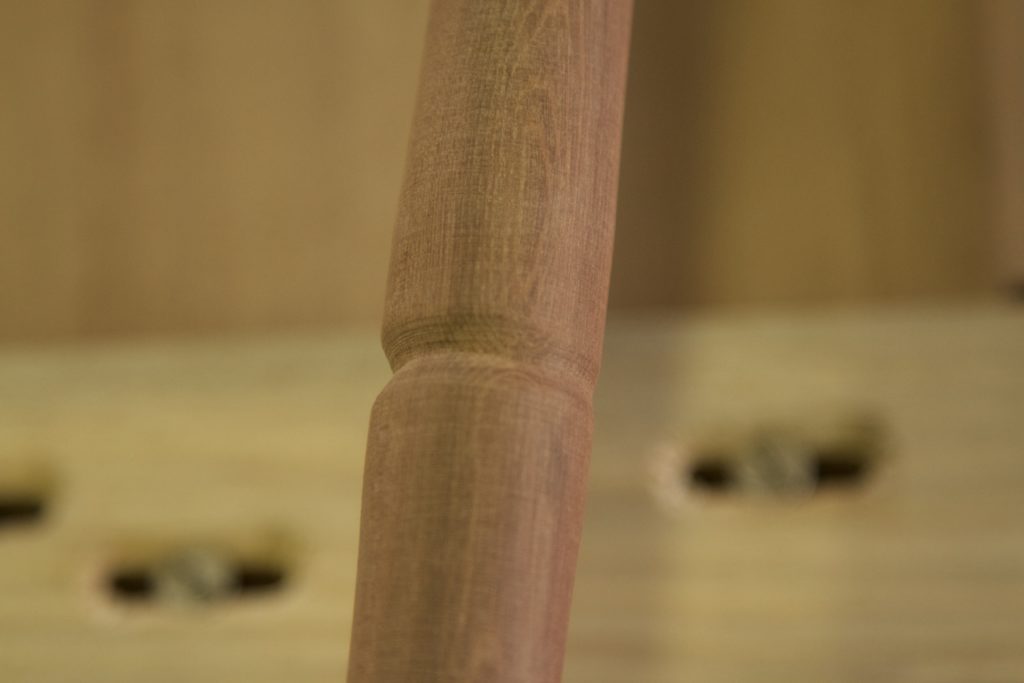
Once all four of the spindles were roughly shaped, they went back to the lathe for finishing (sanding with progressively higher grid sandpaper) and the shaping of the tendons.
At last it was time to use a set of hand tools I made back in January. I am of course referring to my shop made Reamer and tenon cutter.
As you can see here I again used the trapezoid leg to position the two beams of the Windsor leg before marking out the location and angle of the mortises.
It all went swimmingly as I first drilled pilot holes on the drill press to keep the spade bit that followed honest. Unfortunately I decided to drill these pilot holes out (with the spade bit) at the end of a very long Saturday. The concentration was going south and it ended up with me drilling one of the holes in the wrong direction!!!!
Enter: Panic Attack! #@!$^%*(&^&*%#@%^!!!!!
Seeing that this is not the first stuff-up I have made in the shop, I know that it is better to just stop working and try to calm down. In this case I added an ice cold G&T to treat the acute exacerbation of my Anxiety Disorder. After my rational mind retuned, it became quite clear how to fix the indiscretion. I had to turn a piece of Kershout to the exact diameter of the hole and glue it into place.
Let this be a lesson to all of us, stop working when you get tired (or gatvol as we would say in this part of the world).
The next day I was able to plane the fix flat and drill a new hole, this time in the correct direction. After that I got to play with the second of my two shop made tools, the reamer.
I drew a square around the hole before I started reaming. This helps to give a visual guide of the progress and alignment.
I tend to do only 3-5 turns with the reamer before scraping out the debris (that tends to clog the reamer) and checking my alignment.
I use this stick that has a tenon of the exact size and a straight shaft as a reference point for my bevel. That way you can make small adjustments as you go.
One done seven to go.

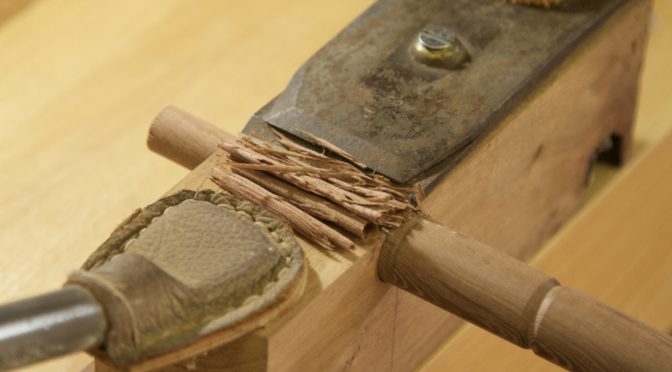

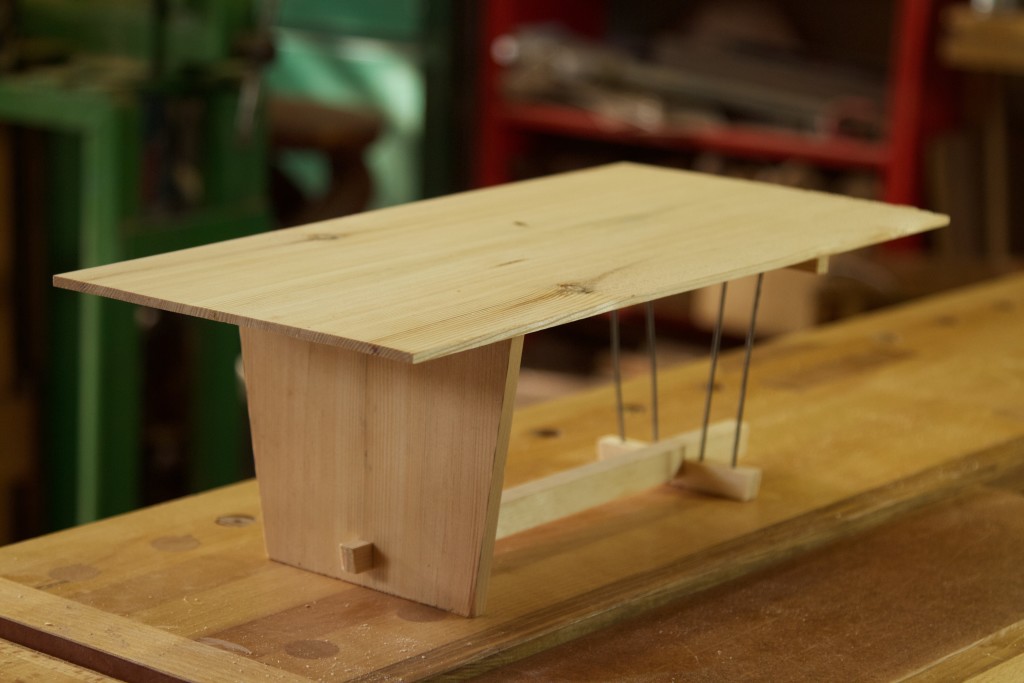


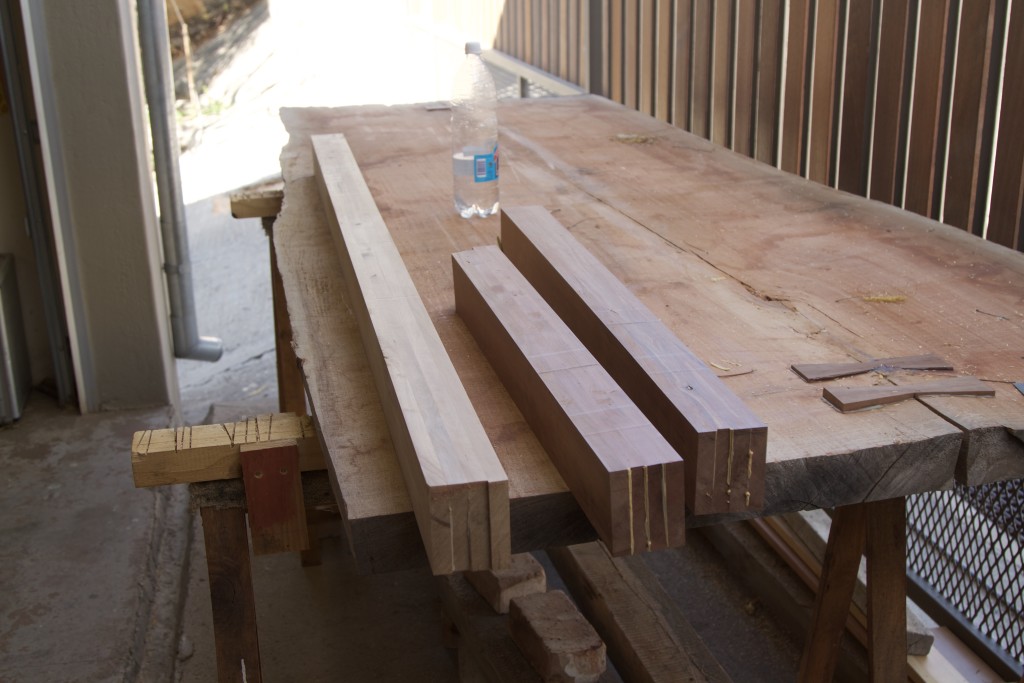
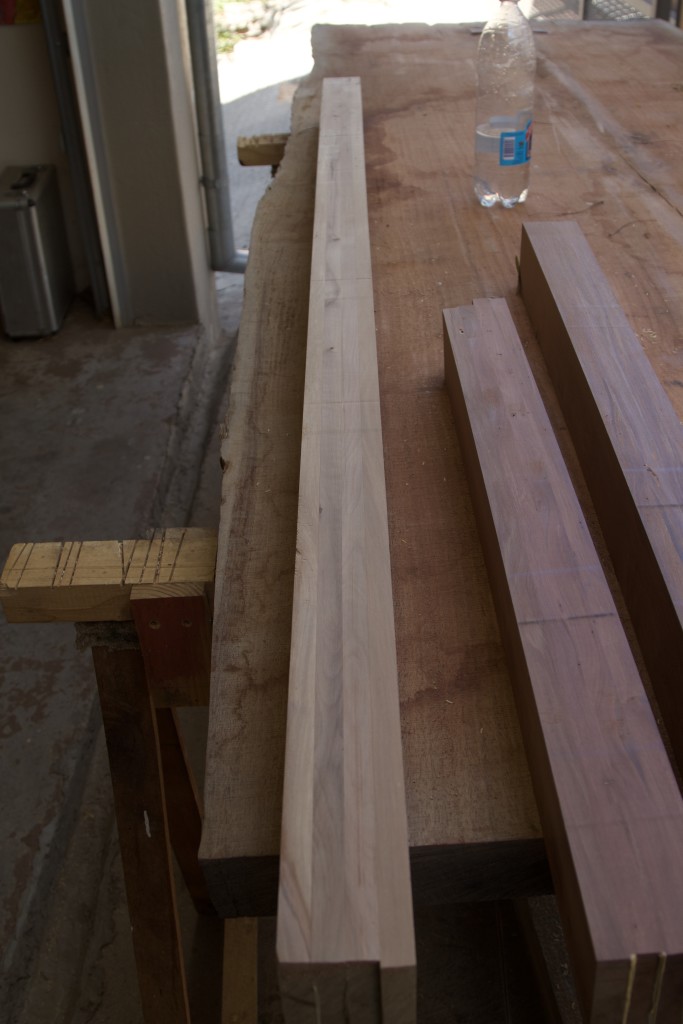
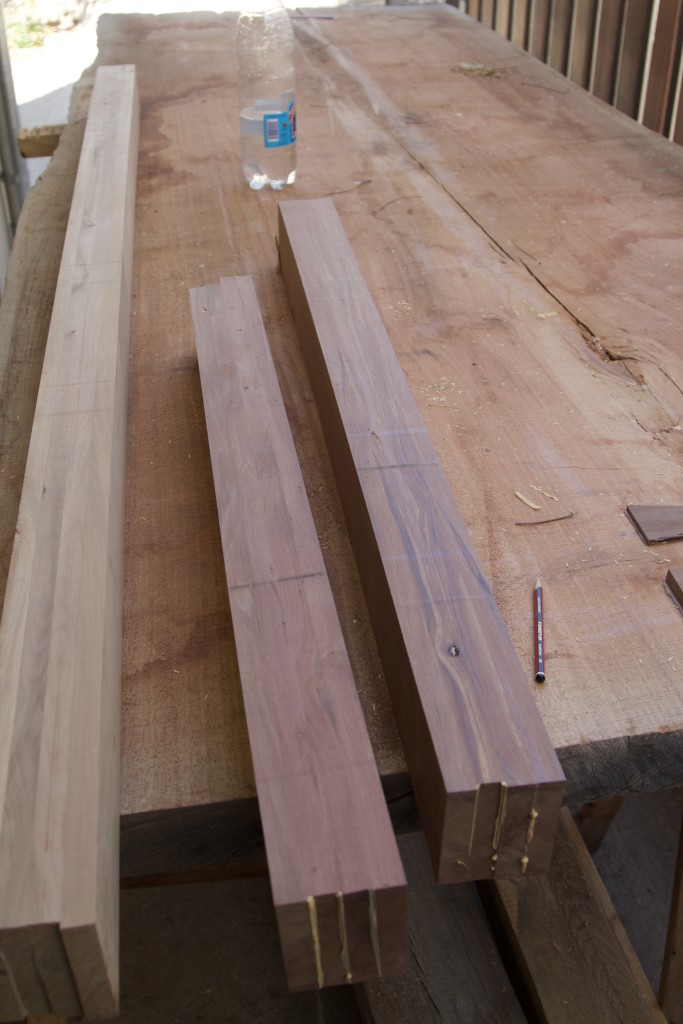

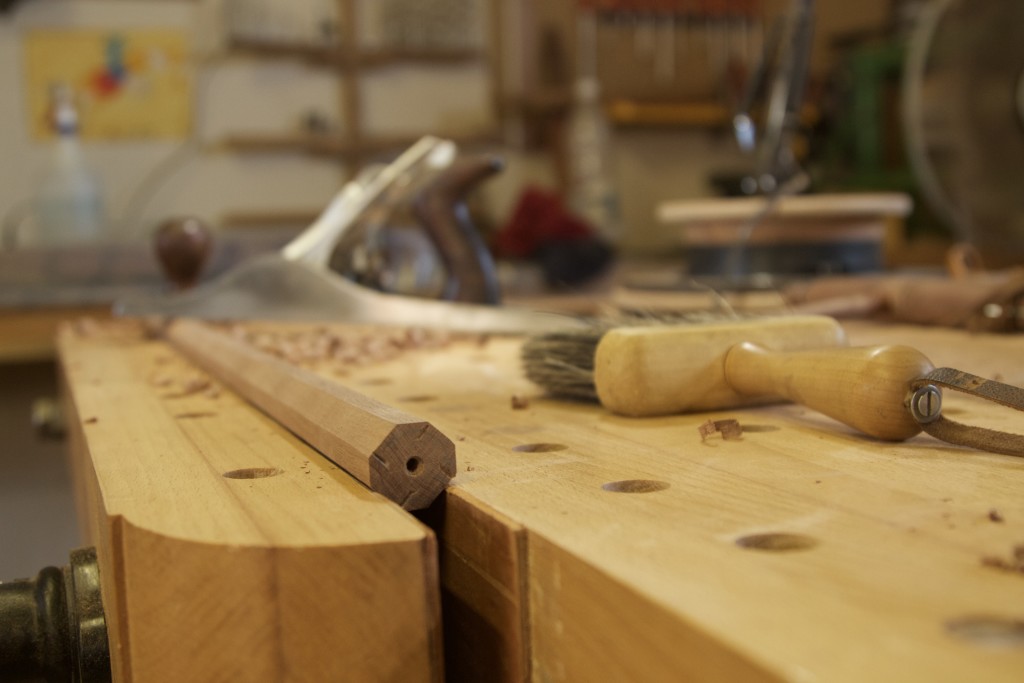


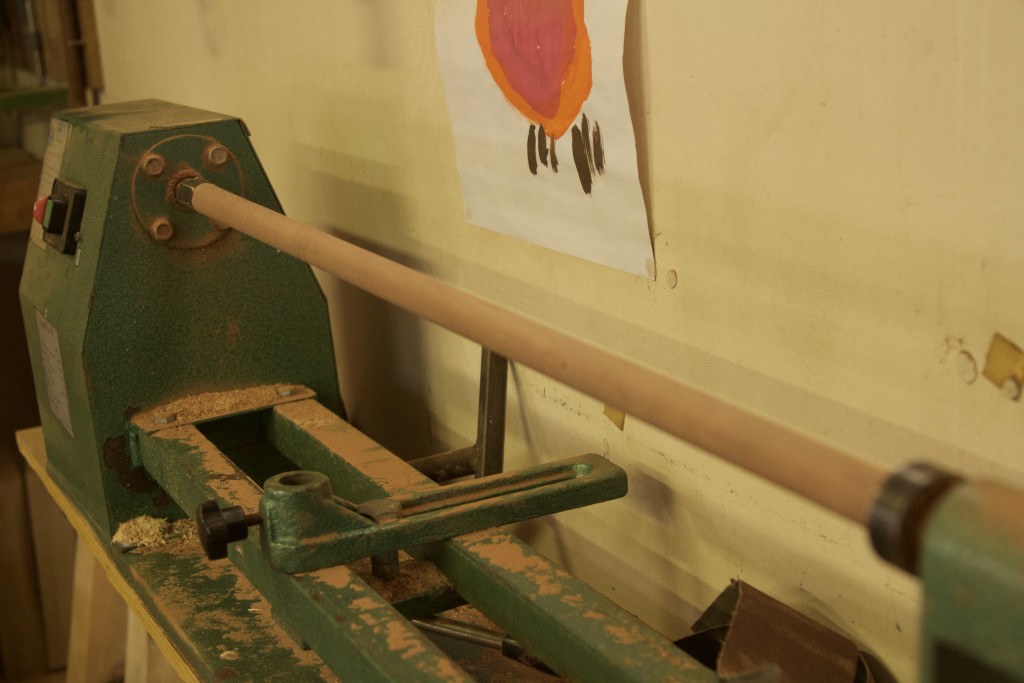

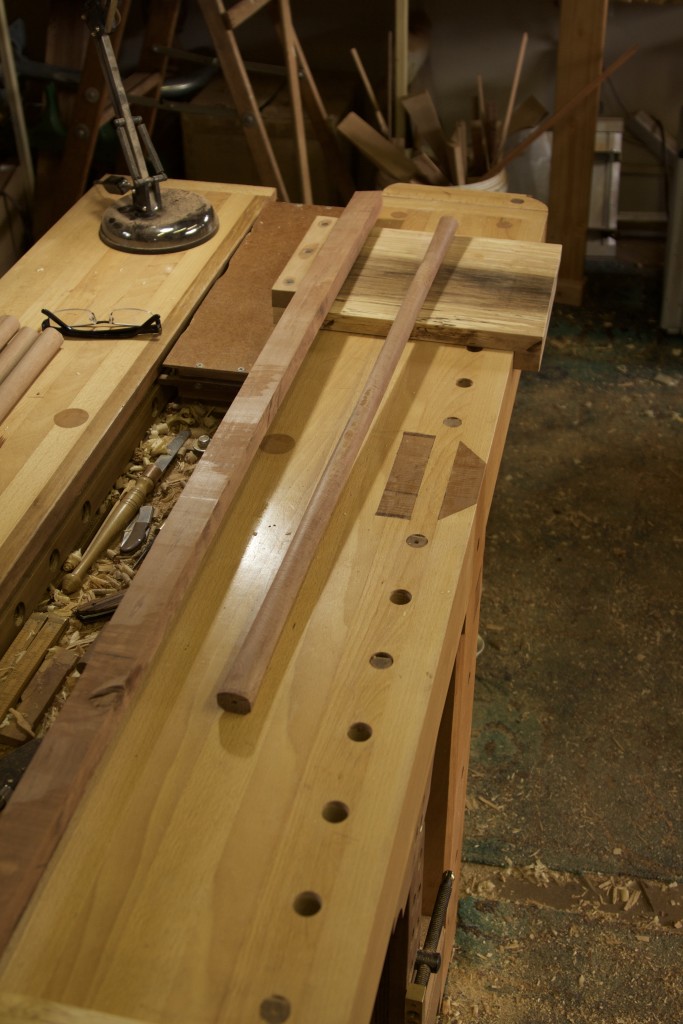
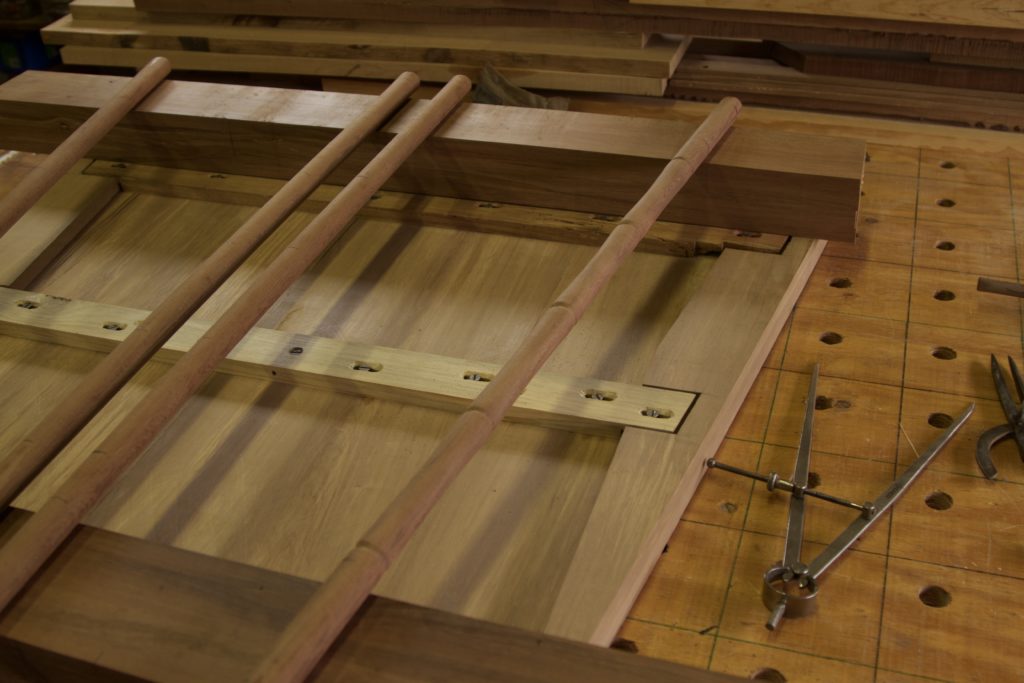

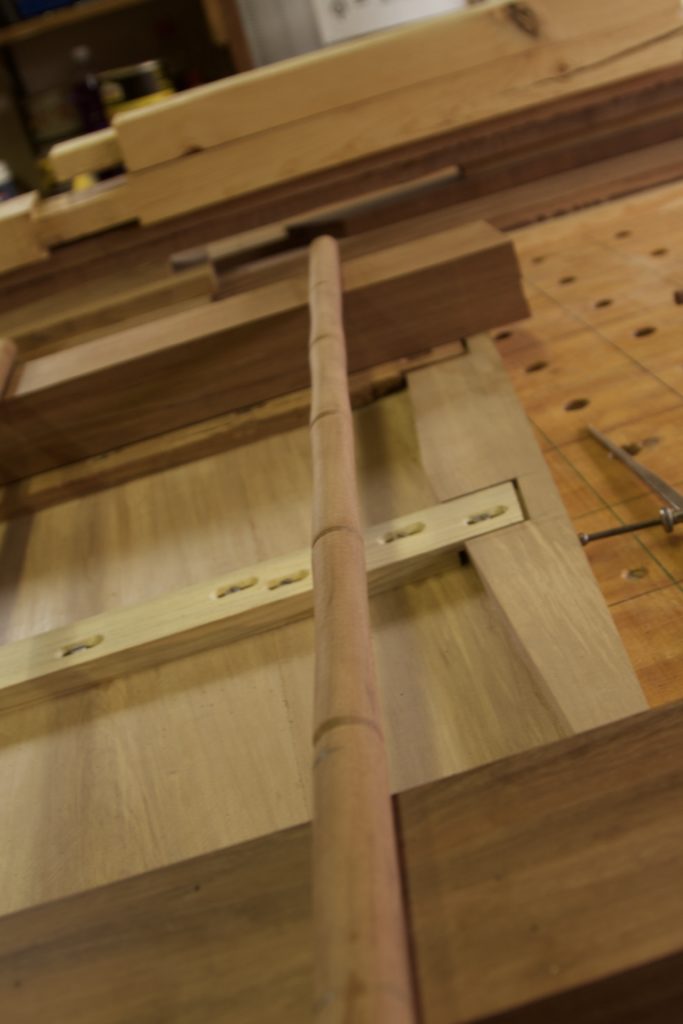

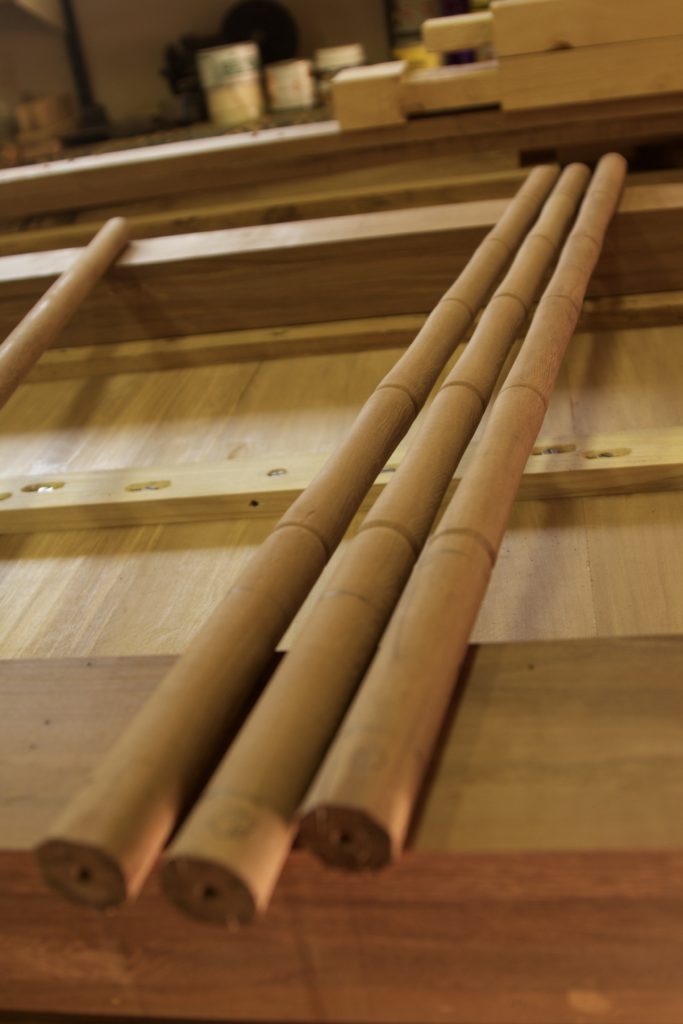
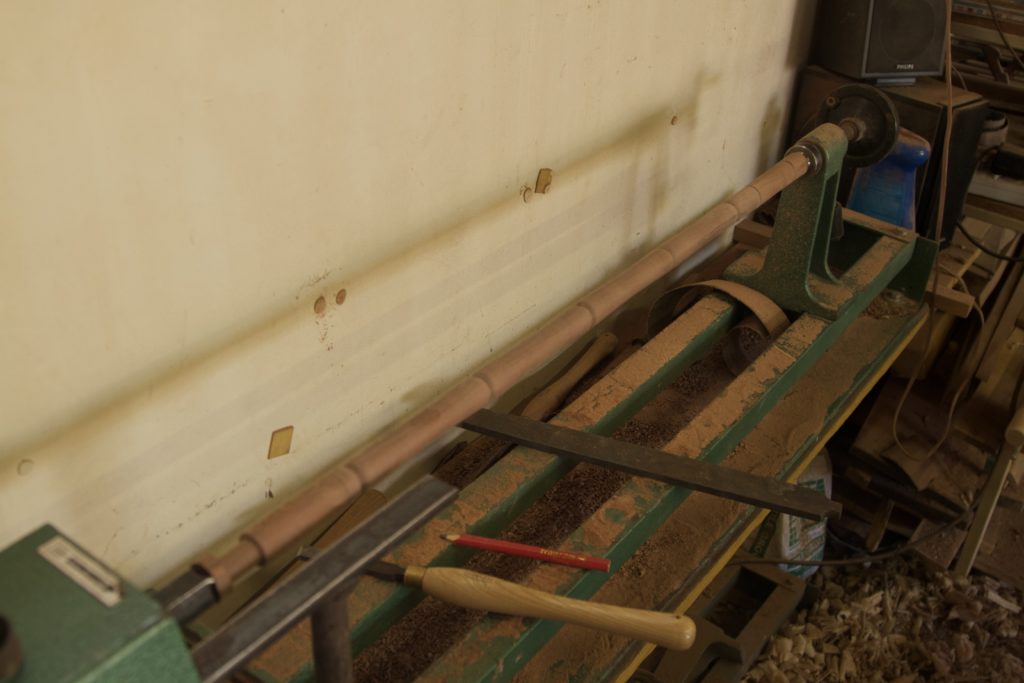

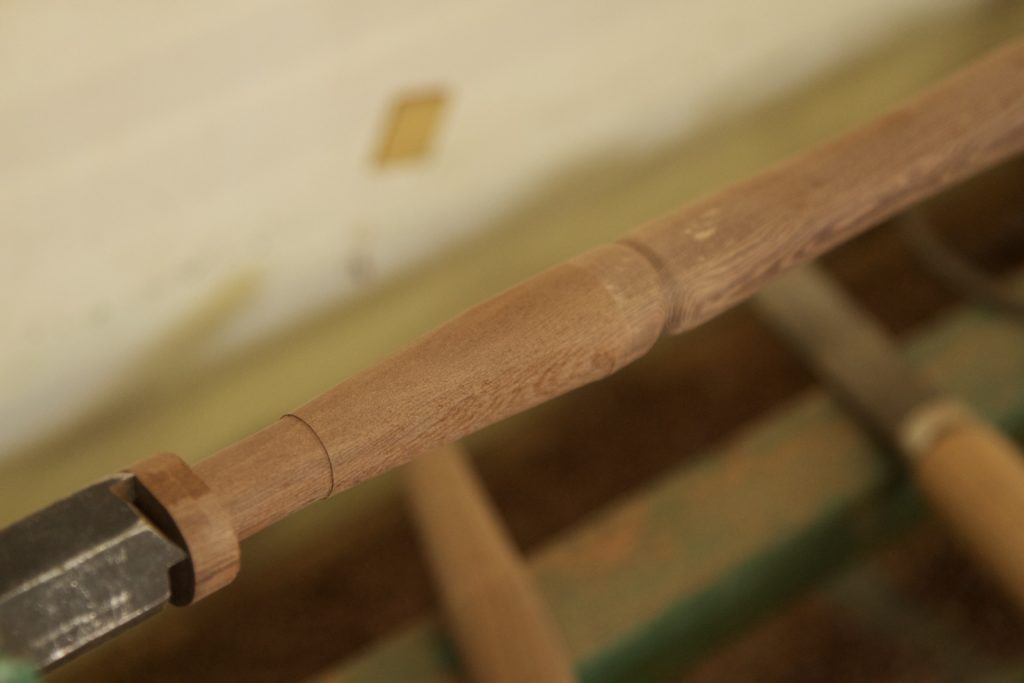
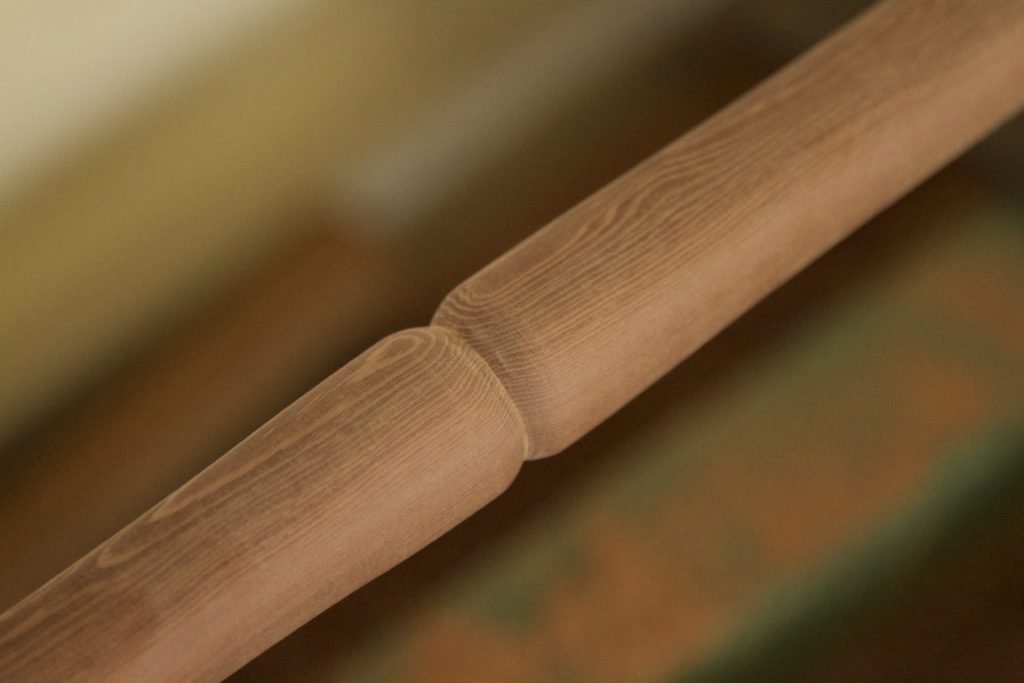






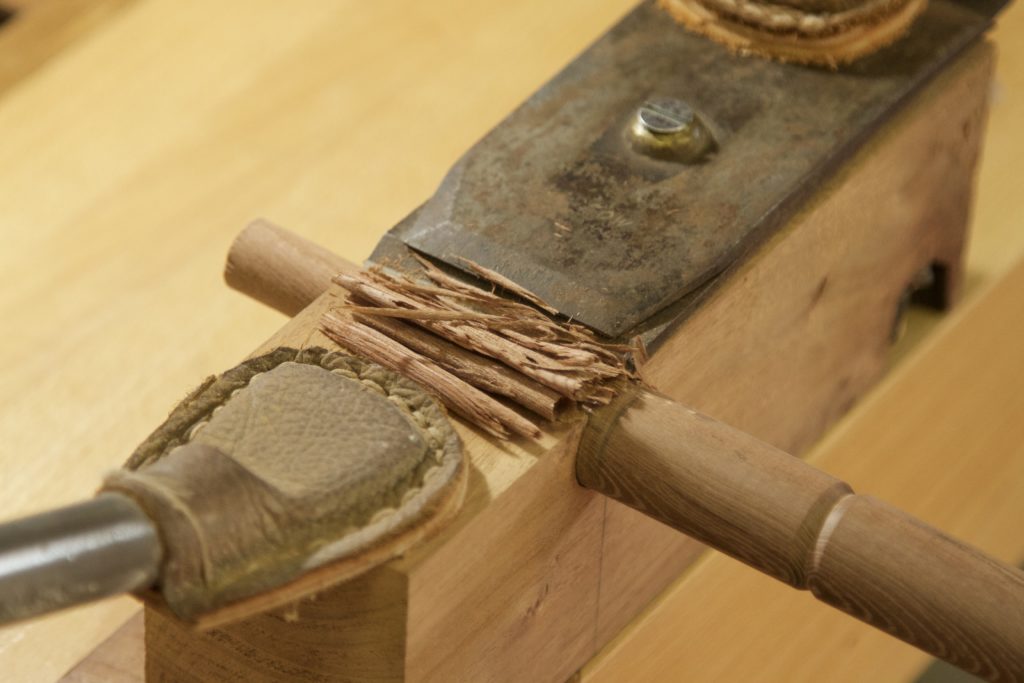
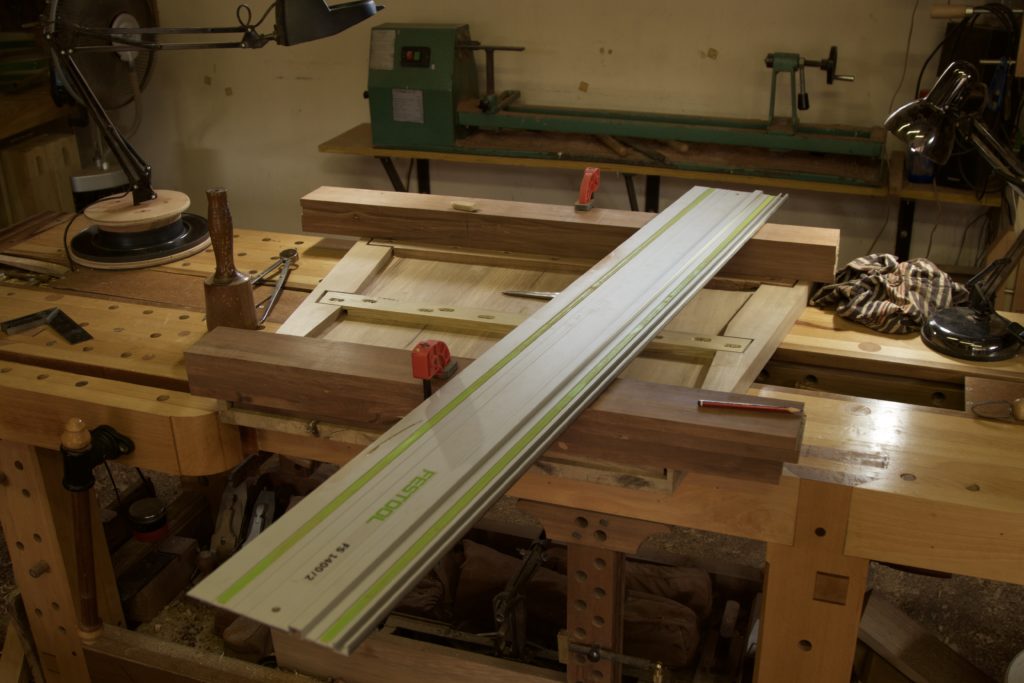









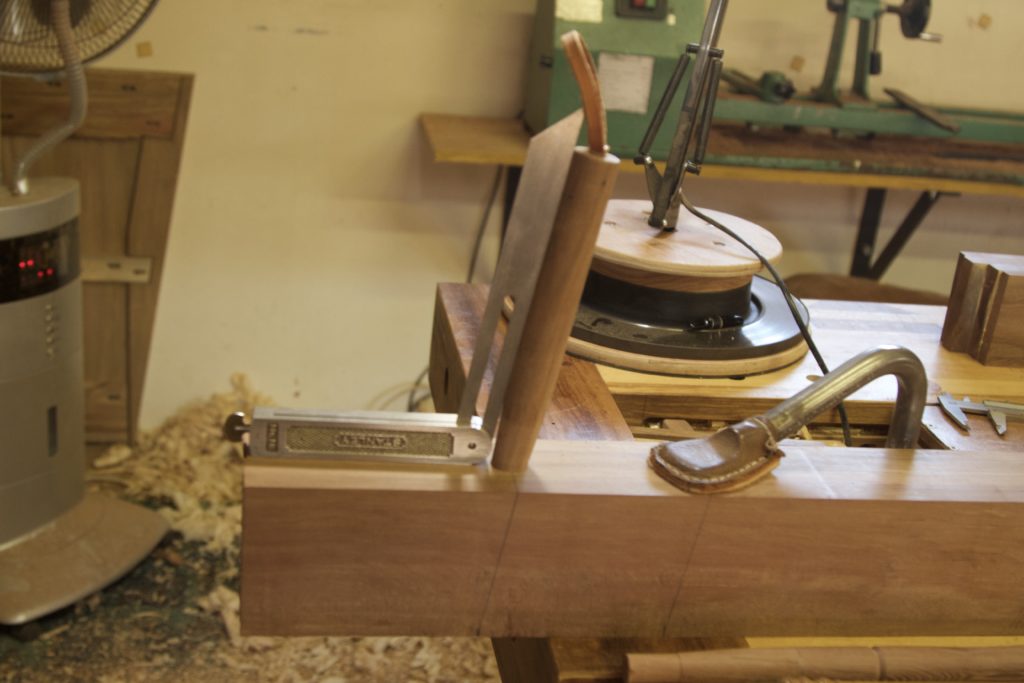


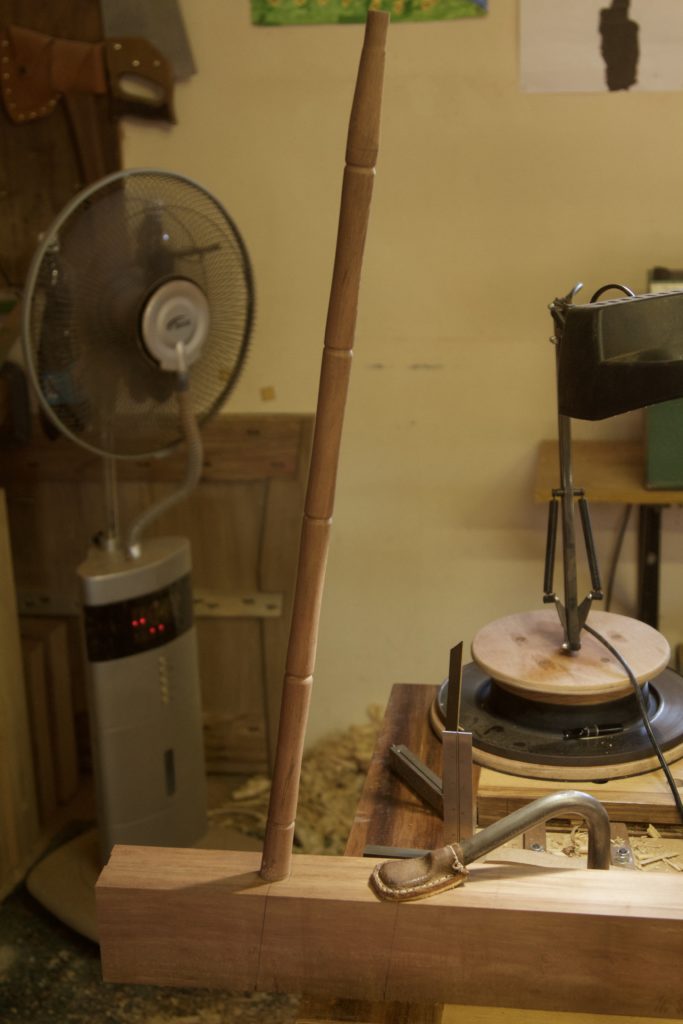
Hey Gerhard,
This is looking fantastic. I really like the bamboo turnings, what a great idea. I’m really looking forward to seeing how this build turns out. How are you planning on keeping the top flat? Breadboard ends?
Hope you are well,
Jonathan
Hey Jonathan
The top is incredibly heavy despite the fact that it will only be 22 mm thick. My thinking is that the weight will go some way towards keeping it flat by itself, but in addition the two legs both has a flat section into which the top will be pulled using a technique I dreamt up over the past year. You will have to wait and see my friend. There will be two rails/aprons that will connect the legs and also some role in keeping the top honest.
Speak to you soon.
Gerhard